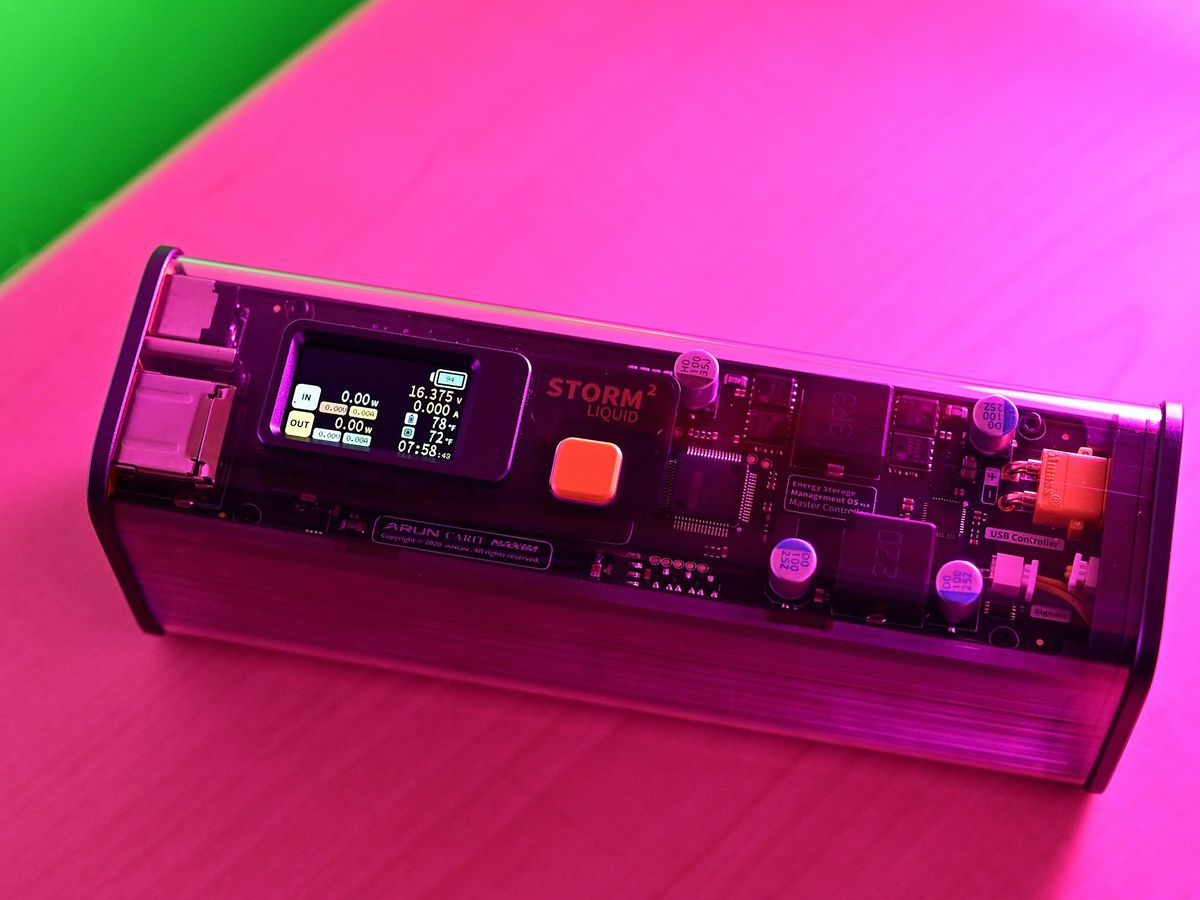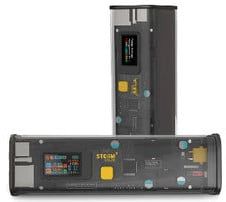What you need to know
- Storm 2 is a massive 99WHr portable battery.
- It has a see-through chassis, LCD, and minicomputer.
- Storm 2 is aimed at "DIY makers, hackers, tech lovers, and geeks."
- Storm 2 is a $99 Kickstarter that is now live.
I will be the first to admit that portable chargers, while extremely useful, are typically not the things I like to review. They are usually metal slabs with some specs that may (or may not) impress you with an expected price tag.
That is why when I got the chance to sample this Storm 2 charger, I took the opportunity. After all, it is see-through, and it has an LCD. I am a simple tech guy, so yes, these things intrigue me.
Here's what else you need to know about this sci-fi-looking battery bank.
Storm 2 Liquid: Specs and features
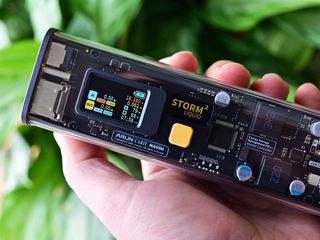
The Storm 2 is a 99.36 WHr portable battery. That number should mean something to you as it is just a hair below what you are legally allowed to carry on airplanes making this ideal for the traveling tech nerd.
As is evident, the most striking feature of Storm 2 is the see-through chassis that lets you see the Panasonic lithium-ion batteries, 32-bit M3 ARM MCU chip, and the TI BQ40z50 coulombmeter (of course, you knew what those were).
| Category | Storm 2 Liquid |
|---|---|
| Power | 100W PD In/Out3.3-25.2V DC OutPass-through charging |
| Battery | 27,600mAh/99.36WhPanasonic-Sanyo NCR18650GA |
| Ports | 2x USB Type-C (100W, 30W)1x USB Type-A (5V)1x DC Output (3.3-25.2V/3A) |
| Display | 1.14" IPS TFT LCD |
| Features | Airline Safe Compact Battery BankRetro Style MonitorManual Power ControlVoltage ProtectionShort Circuit, and Temperature Protection |
| Lifespan | 500 charges |
| Recharge time | 1.5 hours |
| Size | 151 x 46 x 59 mm |
| Weight | 578 grams |
| Material | Aluminum Alloy/V0 fireproof chassis |
The see-thoroughness serves no purpose other than aesthetics, but you must admit it looks very DIY. The company notes that this case and batteries are "approved by Tesla" and a "V0 classification Fireproof PC Chassis." It should be safe, especially when combined with the protection for voltage, short circuit, and temperature abnormalities.



But it is that 1.14-inch IPS TFT LCD window that's intriguing. The mini-OS is powered by a 32-bit M3 ARM MCU, and it lets you visualize "battery life, charge cycles, output distribution per battery cell, running temp, and DC voltage adjustment." The display can be left on all the time or turn off after a specific duration. You can manipulate the battery's settings via the single yellow button and a combo of short or long pushes.
Storm 2 Liquid: How is it?
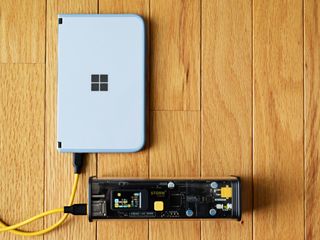
I've had the Storm 2 for about a week now using to charge everything from my various smartphones to laptops. With the 100-watt output via Type-C, the charger can handle everything but gaming laptops (which require much more power due to GPUs).
The output is dynamic when a laptop is in use, and it is rather neat to see it fluctuate based on demand. The Razer Book 13 could draw 80 watts of power in performance mode, more than its typical 65-watt charger would allocate. It's that ability to see what is happening when plugged in (versus blindly assuming output) that makes Storm 2 different from everything else.


Build quality and design all appear fine, and I had no issues. I am not sure the acrylic-like case would hold up against a drop on concrete (I could see that cracking), but the core aluminum chassis feels rigid and sturdy.
Jumping through the menus, picking temperature, etc., with a single button was quirky but easy to figure out. The menu system is done quite well and easy to understand.
Overall, Storm 2 is easily the most extraordinary portable battery pack I have come across. It will undoubtedly be a fun conversation starter when you bust it out as it looks all a bit Mad Max-ish.
Need more? See our 10-must have laptop accessories for students for additional ideas.
Storm 2 Liquid: Price and availability
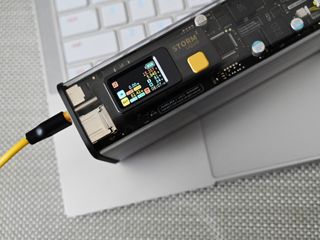
Storm 2 is currently a Kickstarter that just went live today (February 23rd). The project had a $10,000 funding goal, but they hit that in the first five minutes, and it now sits at $106,000.
Super Early Bird ($99) and Early Bird ($109) slots are still available with an April expected shipping date (international).

Daniel Rubino is the Editor-in-chief of Windows Central. He is also the head reviewer, podcast co-host, and analyst. He has been covering Microsoft since 2007 when this site was called WMExperts (and later Windows Phone Central). His interests include Windows, laptops, next-gen computing, and wearable tech. He has reviewed laptops for over 10 years and is particularly fond of 2-in-1 convertibles, Arm64 processors, new form factors, and thin-and-light PCs. Before all this tech stuff, he worked on a Ph.D. in linguistics, performed polysomnographs in NYC, and was a motion-picture operator for 17 years.
